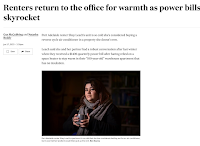Australian Agriculture & Potential impact of Trump politics.
It's been a while, but it's time to start blogging again. If only to save the sanity of all my friends who have to listen to my political thoughts and concerns.
Starting to get that pit of the stomach feeling at actions of Trump in USA and potential ramifications for Australian Agriculture industry.
Trump’s tariff threats are flying fast and furiously, aimed at any nation which isn't the USA.
My concern for Australia is, the demand and sales for Australian beef and lamb to American consumers will dramatically fall.
This would be a pattern with every nation he decides to kick. Take for example China / USA soybean trade.
“If additional tariffs are imposed, China is expected to retaliate immediately, targeting grains and oilseeds, especially soybeans. However, the impact on China's soybean market may be less severe than during the 2018-2019 trade war due to: (1) higher state reserve inventories, (2) increased imports from Brazil, and (3) China’s growing adaptation to low-protein feed formulas, which reduce soymeal use and the need for imported soybeans.” (RaboBank Research, 2nd January 2025)
What worries me, is the potential for Trump’s policies to kick off a global recession - or worse, a global depression.
Now. If that happens Australian wool prices will also tank too.
The overall impact to Australian agriculture could be considerably worse than it would have been if the then Labor Govt hadn’t intervened during the GFC. Now just heap on devastation if the MAGA-channelling Peter Dutton and the LNP coalition are elected this year…..
There are already reports coming out of the USA by individual farmers they are cancelling share cropping, as they believe the tariffs are going to hurt their supplier chains. They are self reporting having trouble securing loans, because Lenders / Financial sector are getting nervous.
However these seem to be points mainstream media is largely avoiding - or not noticing.
Trump’s mass deportations are an issue too, as this is already starting to have an impact on USA’s orchardists and horticulturalist ability to harvest their product. There is also potential to significantly impact the USA’s meat processing industry.
Talking about this, over a 'Leftie Latte' at some length this morning and becoming increasingly concerned, by what we are seeing and hearing, and the potential catastrophic impact on Australian agriculture.
There’s a very real risk here that things could go so badly, banks start issuing forecloses. Given the previous experiences of 'Liberal' Party policies on many farming families - the Liberal National Coalition (LNP) will always put the Banks, 1st and shaft everyone else. (Yes I will NEVER forgive them.
In Australia, we need to baton down the hatches and start supporting local. Don’t be surprised when you see members of Australian farming families, looking for off farm jobs and consider how much that increases the on farm workload on those left running it and juggling children without them.
Buy Australian, from Australian companies, support local businesses, support the unions and - vote for the party or independents running the policies LEAST like Trump, MAGA, Project2025.
Don’t do a USA and vote like as if it's Red Team V Blue Team game.
Don’t vote based on cult of personality - vote based on policy. Read Project2025, listen to Trump, avoid ANY and all candidates or party sounding like that.
Also take a look at which multinational companies (including retailers e.g Target, and Walmart) aren’t protecting their diversity employees (DEI) and remember that’s everyone except white men. If you’re a woman in the USA, even a white one, your job is not safe.
As to the USA:
Honestly. If you live in the USA you should start planting a veg garden. Even if it’s just pots on a balcony.
If you’re a dual national, or have right to abode elsewhere - get the hell out of the USA, particularly if you’re NOT a white male.
The political nerd in me is watching the global news thinking, ok we’re probably hitting one of those knife edge moments in geopolitical history. The realist in me is thinking we should expect the worst and hope for the best.
I REALLY hope I’m wrong, but only time will tell. Just please Universe - let me be wrong.
--------------------------------
Links & in the News:
US-China trade war: no turning back, 8 August 2019 23:41 RaboResearch
The President Proposes.........
Trump’s trade policy: Risks for Australia
WA primary producers brace for impact of Trump tariffs
Australia’s economic security outlook: Expert perspectives on challenges facing Australia in 2025
Trump’s Trade and Deportation Plans Could Be Disastrous for the U.S. Food Supply
'Everyone's nervous' — U.S. farmers gather in San Antonio ahead of mass deportations
Trump ag secretary nominee says food issues from mass deportations are ‘hypothetical’
Trump’s Deportations Will Hit American Workers, Too
American Farm Bureau Federation













